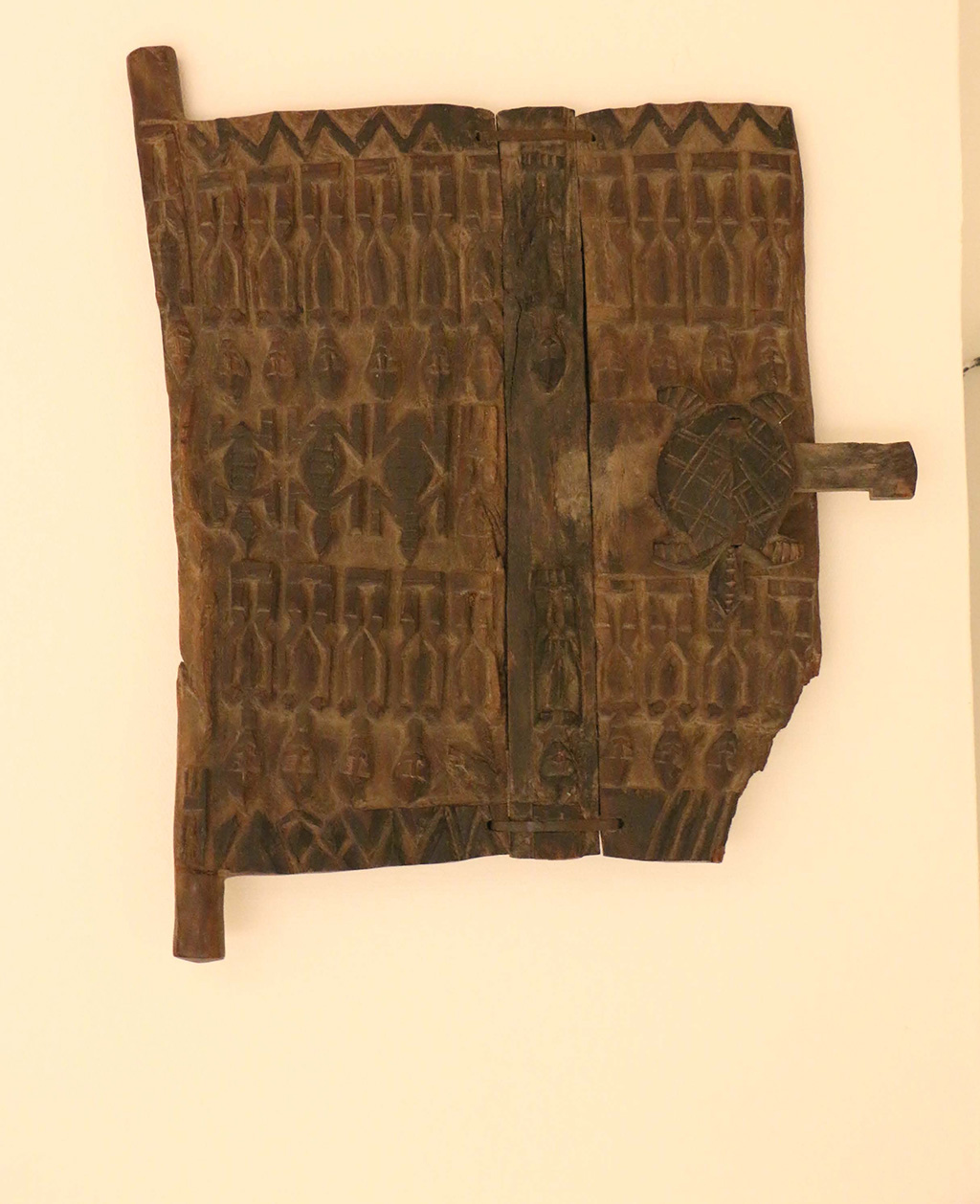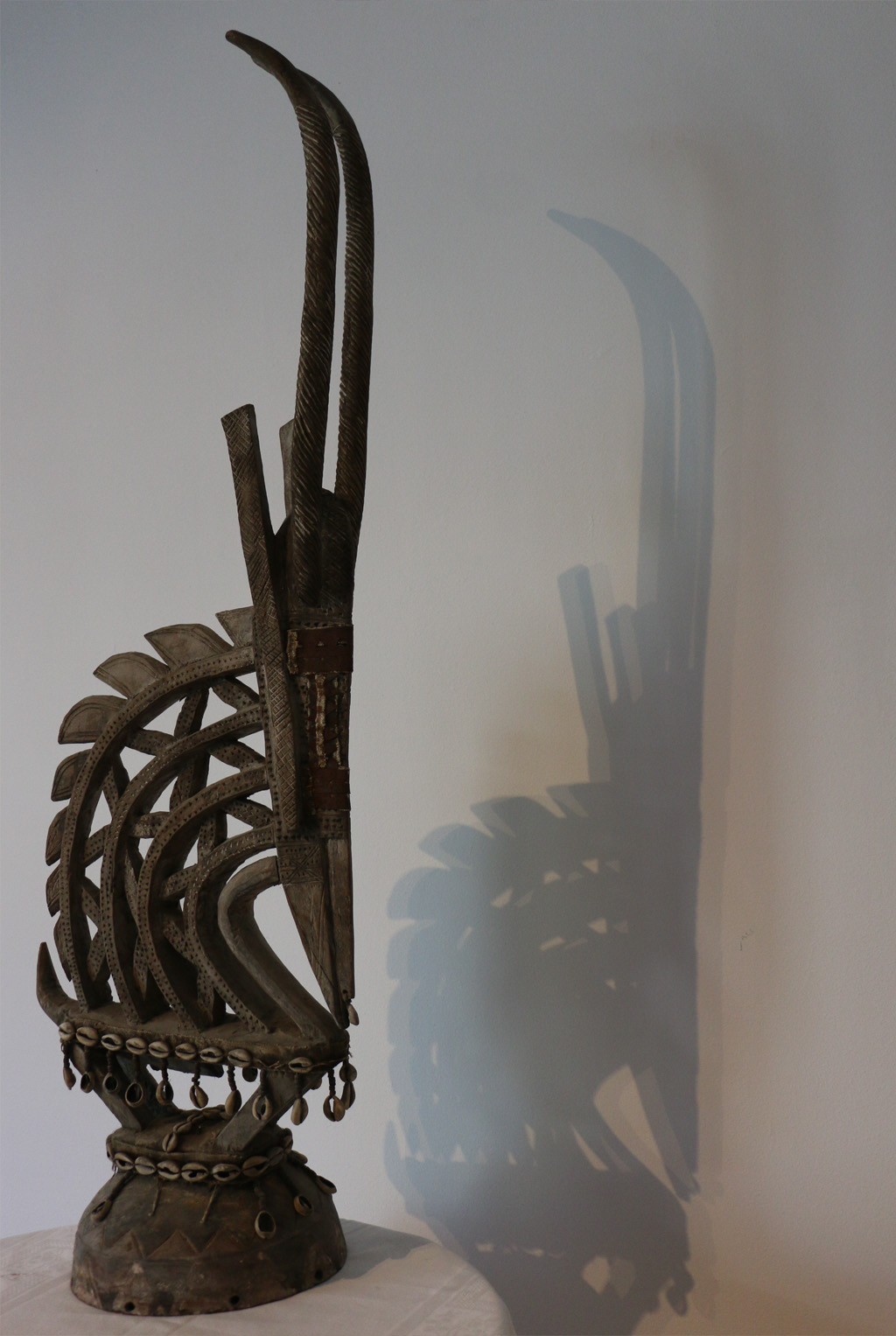From the nomadic Tuareg, Fulani, Bozo fishers, Bambara, and Dogon farmers, each of Mali’s dozens of ethnic groups each of which has passed down their own traditions, history and occupations over the centuries.
Tribes/tribus/Stämme
Dogon
The Dogon inhabit the Bandiagara escarpment in Mali. Dogon sculpture is intimately linked with spiritual beliefs related to ancestors, both real ancestors and mythic Nommo spirits (primordial ancestors created by the central god, Amma). Figures are made to house the spirits of deceased family members and are placed in family shrines, and masks are used to drive away the spirits of the deceased at the end of the mourning period.
Also found in Dogon territory are what may be the oldest textile fragments in West Africa (dated to the 11th century), establishing a baseline date for the existence of the narrow-band loom in the region, and the oldest wood sculptures in existence (three have been traced by carbon-14 dating to the 15th–17th century CE). They were found in caves in the Bandiagara escarpment. The Dogon attribute them to an earlier population, the Tellem. These figures, usually of simplified and elongated form, often with hands raised, seem to be the prototype of the ancestor figures that the Dogon carve on the doors and locks of their houses and granaries; investigations have confirmed that the Tellem were ethnically a different people from the Dogon, though the art style appears to have been handed on from one people to the other.
SCULPTURED DOOR – DOGON – MALI
PORTES VOLET DOGON, MALI
DOGON DOORS, MALI

Early history is informed by oral traditions, which claim that the Dogon originated from the west bank of the Niger River (10th to 13th centuries). They emigrated west to northern Burkina Faso, where local histories describe them as kibsi.
Bambara
The Bambara live in the region around Bamako, the capital of Mali. Their traditions include six male societies, each with its own type of mask. The society known as Ntomo is for young boys before circumcision. The masks associated with Ntomo have a line of vertical projections above the face, signifying beliefs related to human creations.
The Tyiwara, an age grade that prepares young men to be husbands and fathers, focuses on agriculture. Its mask uses a headdress representing, in the form of an antelope, the mythical being who taught men how to farm. The Komo is the custodian of tradition and is concerned with all aspects of community life—agriculture, judicial processes, and passage rites. Its masks, which are considered to be enormously powerful, are shaped in an elongated animal form decorated with actual horns of antelope, quills of porcupine, bird skulls, and other objects. Masks of the Kono, which enforces civic morality, are also elongated and encrusted with sacrificial material.
Ancestor figures of the Bambara clearly derive from the same artistic tradition as do many of those of the Dogon; so also do their sculptures in wrought iron. Such figures are made by blacksmiths, who—because of their skill in transforming material from the earth—are believed to control great amounts of power (nyama).

CIMIER GAZELLE TI WARA / CI WARA SUR PANIER – BAMBARA / BAMANA – MALI ACQUIS ANNEES 1960
TI WARA / CI WARA GAZELLE HEADCREST ON BASKET – BAMBARA / BAMANA – MALI ACQUIRED 1960S
These headdresses celebrate the divine Ci Wara, half man and half antelope, who introduced humans to agriculture.
